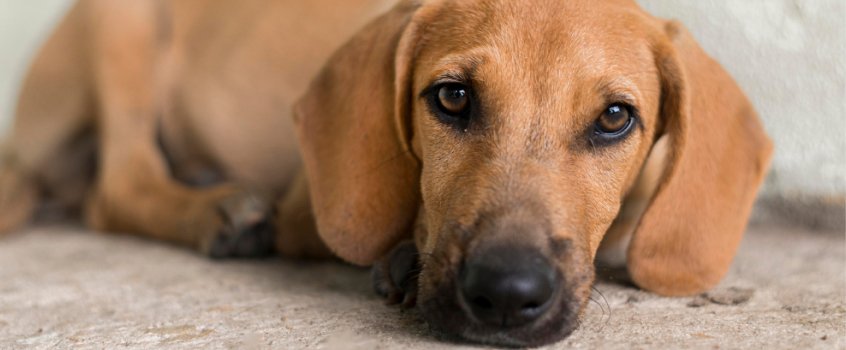Humane Euthanasia
HUMANE EUTHANASIA
At Cornwall Animal Hospital, we deeply honor the special bond between you and your pet, recognizing them as cherished members of your family. Advances in veterinary care have helped pets live longer, enriching the human-animal connection like never before. While it’s never easy to face the end of a pet’s life, planning ahead for euthanasia can ease the emotional burden during those difficult moments. Our compassionate team is here to support you and your beloved companion through every stage of life. We offer both in-clinic and at-home euthanasia services, along with a range of aftercare options through Gateway Pet Memorial to provide comfort and care during this challenging time.

PREPARING TO SAY GOODBYE

Some Questions comes to mind for the Humane Euthanasia
(The following information is found in the Pawsitive Resources
Preparing to say goodbye to your pet” brochure.)
How to make a decision, when it is the “right time” to say goodbye to my pet?
Making the decision about euthanasia is one of the hardest we face as pet parents. Our pets are beloved family members, and thanks to advances in veterinary medicine and preventive care, they’re living longer and closer with us than ever before. The deeper the bond, the more difficult it is to face the end of their lives. While it’s heartbreaking to accept that pets’ lives are generally shorter than ours, planning ahead for euthanasia can ease the stress when the time comes. It’s important to recognize signs that indicate when it may be time and to work closely with your veterinarian to fully understand your pet’s illness or injury. Together, you can explore all options—whether recovery is possible or if quality of life can still be maintained—ensuring your pet’s comfort and dignity throughout.
How to know, if my pet still has a good quality of life?
You can assess your pet’s quality of life by observing daily changes such as whether they still enjoy their routine activities alone or with family, if they show interest in their food or have lost appetite, and if they can manage their regular bathroom needs independently. Sharing your observations with your veterinarian can help identify the reasons behind any decline in quality of life. While some behavioral changes are normal with aging, regular check-ups and diagnostics—ideally twice a year for senior pets—can help detect or manage diseases and explore palliative care options. There are many treatments, diets, and medications available to improve your pet’s comfort. Remember, age alone is not a disease or a reason for euthanasia.
How to prepare me and family member to say goodbye?
Take the time to thoughtfully consider when and where the euthanasia will take place, how many family members will be present, and what memories you want to cherish afterward. Reflecting on these details can help ease the process for you and your loved ones and support healing during grief. Whether or not to be present during the procedure is a personal choice, but giving everyone a chance to say goodbye is important whenever possible. You may also choose to visit your pet after euthanasia to find closure—something many avoid but often later wish they had done. Make the goodbye meaningful, whether by spending time at a favorite park, simply being together, or visiting the veterinary hospital. Your veterinarian can guide you on visitation options and how much time to spend with your beloved pet.
What happens during humane euthanasia of a pet?
Euthanasia means a painless death. For your pet, it involves a quick intravenous injection of a high dose of barbiturate. Your veterinarian or technician will usually place an IV catheter in a leg vein and may give sedation first. The process itself happens within seconds. Afterward, your vet will confirm your pet has passed by listening to the heart. It’s normal to see twitching, gasping, or even urination and defecation after death, as the body releases final reflexes. The eyes may also remain open.
What happens to my pet’s body after euthanasia?
Rest assured, your pet’s remains will be treated with the utmost dignity, respect, and care. The body will be safely stored at the proper temperature until a trusted cremation service arrives. If you wish, arrangements can be made for you to attend the cremation or viewing.
What aftercare options do I have for my pet?
You have several options for your pet’s final care. Your beloved pet can be individually cremated, with the ashes returned to you in a sealed urn. Alternatively, group cremation allows your pet to be cremated and buried alongside other cherished pets. You may also wish to discuss keepsakes with your family and our veterinary team, such as preserving a piece of fur or creating a clay paw print impression to honor your pet’s memory.
Are there any resources or suggestions to help my family and me with the grieving process?
There are many services and resources available to support you and your family through the grieving process. These include pet loss support lines, support groups, books for both adults and children on grieving and pet loss, and individual grief counselors specializing in pet bereavement. Engaging in meaningful family activities—such as planting a tree or flowers in memory of your pet, scrapbooking, or writing about special moments—can help express emotions and ease the grieving journey. Remember, grief is normal, and you are not alone. Don’t hesitate to seek support if you feel it could help you and your family. Your veterinarian and our staff are here to support you every step of the way, so please feel free to ask any questions or share your concerns.
